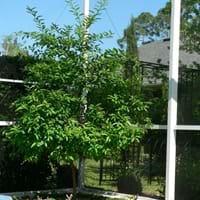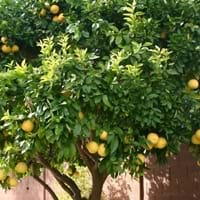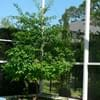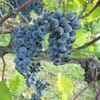Life Span
Perennial
Perennial
Origin
Hybrid origin
South Asia, Southeast Asia
Types
Eustis, Lakeland, Tavares
Not Available
Number of Varieties
Not Available
Habitat
gardens, Woodlands
Mediterranean region
USDA Hardiness Zone
11-12
8-10
AHS Heat Zone
12-6
Not Available
Sunset Zone
H1, H2, 7, 8, 9, 14, 15, 16, 17, 18, 19, 20, 21, 22, 23, 24
Not Available
Habit
Oval or Rounded
Spreading
Flower Color Modifier
Bicolor
Bicolor
Fruit Color
Light Yellow, Yellow green
Green, Lemon yellow, Yellow
Leaf Color in Spring
Green, Dark Green
Green
Leaf Color in Summer
Dark Green
Green
Leaf Color in Fall
Dark Green
Dark Green
Leaf Color in Winter
Light Green
Dark Green
Plant Season
Spring, Summer, Fall, Winter
All year
Sunlight
Full Sun
Full Sun
Type of Soil
Loam, Sand
Rich
The pH of Soil
Acidic, Neutral
Acidic
Soil Drainage
Well drained
Well drained
Bloom Time
Late Spring, Early Summer
Spring, Summer
Tolerances
Drought
Full Sun
Where to Plant?
Container, Ground, Pot
Container, Ground
How to Plant?
Divison, Seedlings
Divison, Seedlings
Plant Maintenance
High
High
Watering Requirements
Do not let dry out between waterings
Reduce watering once fruit are growing, Water daily during growing season
In Summer
Moderate
Lots of watering
In Spring
Ample Water
Moderate
In Winter
Less Watering
Average Water
Soil pH
Acidic, Neutral
Acidic
Soil Type
Loam, Sand
Rich
Soil Drainage Capacity
Well drained
Well drained
Sun Exposure
Full Sun
Full Sun
Pruning
Remove dead branches
Prune to control growth, Remove dead branches
Fertilizers
All-Purpose Liquid Fertilizer, organic fertlizers
Fertilize in early to mid-summer, for fruiting plants, use high phosphorous content fertilizer
Pests and Diseases
Citrus foot rot, Citrus gummosis, Citrus leaf miner
Aphids, Citrus foot rot, Citrus gummosis, Citrus leaf miner, Red blotch
Plant Tolerance
Drought
Full Sun
Flower Petal Number
Single
Double, Semi-Double
Foliage Texture
Medium
Coarse
Foliage Sheen
Glossy
Glossy
Attracts
Not Available
Ants, Birds
Allergy
Not Available
Anaphylaxis, Cough, Nausea, Rhinitis, Stomach pain, Swelling, Urticaria, Vomiting, wheezing
Aesthetic Uses
Showy Purposes
Farmland, Showy Purposes
Beauty Benefits
Not Available
Acne, Good for skin, Good for the Scalp, Improve skin tone, Moisturizing, Strong, beautiful hair
Environmental Uses
Air purification
Food for animals, Very little waste
Medicinal Uses
Fiber, Vitamin C
anti-cancer, constipation, Digestive, Gastrointestinal disorders, Gout, Immunity, Jaundice, Respiratory Disorders, Rheumatoid arthritis, scurvy, Ulcers, Urinary problems, Weight loss
Part of Plant Used
Fruits
Fruits
Other Uses
Used As Food, Used in making beverages
Cosmetics, Used as a flavouring in food, Used As Food, Used for its medicinal properties
Used As Indoor Plant
Yes
No
Used As Outdoor Plant
Yes
Yes
Garden Design
Edible, Fruit / Fruit Tree, Shade Trees
Edible, Fruit Tree, Tropical
Botanical Name
X CITROFORTUNELLA floridana
Citrus limetta
Common Name
Limequat
sweet lime, sweet lemon, sweet limetta
In Hindi
Limequat
मौसम्बी
In German
Limequat
süße Limone
In French
Limequat
Citrus limetta
In Spanish
Limequat
limetta dulce, limón dulce mediterráneo, limón dulce y lima dulce
In Greek
Limequat
γλυκό ασβέστη
In Portuguese
Limequat
doce de limão
In Polish
Limequat
słodkie limonki
In Latin
Limequat
dulcis ad cinerem
Phylum
Magnoliophyta
Magnoliophyta
Class
Magnoliopsida
Magnoliopsida
Order
Sapindales
Sapindales
Clade
Angiosperms, Eudicots, Rosids
Not Available
Tribe
Not Available
Citreae
Subfamily
Not Available
Citroideae
Number of Species
Not Available
Season and Care of Limequat and Sweet Lime
Season and care of Limequat and Sweet Lime is important to know. While considering everything about Limequat and Sweet Lime Care, growing season is an essential factor. Limequat season is Spring, Summer, Fall and Winter and Sweet Lime season is Spring, Summer, Fall and Winter. The type of soil for Limequat is Loam, Sand and for Sweet Lime is Rich while the PH of soil for Limequat is Acidic, Neutral and for Sweet Lime is Acidic.
Limequat and Sweet Lime Physical Information
Limequat and Sweet Lime physical information is very important for comparison. Limequat height is 300.00 cm and width 180.00 cm whereas Sweet Lime height is 800.00 cm and width 600.00 cm. The color specification of Limequat and Sweet Lime are as follows:
Limequat flower color: White
Limequat leaf color: Green and Dark Green
Sweet Lime flower color: White
- Sweet Lime leaf color: Green
Care of Limequat and Sweet Lime
Care of Limequat and Sweet Lime include pruning, fertilizers, watering etc. Limequat pruning is done Remove dead branches and Sweet Lime pruning is done Prune to control growth and Remove dead branches. In summer Limequat needs Moderate and in winter, it needs Less Watering. Whereas, in summer Sweet Lime needs Lots of watering and in winter, it needs Average Water.





